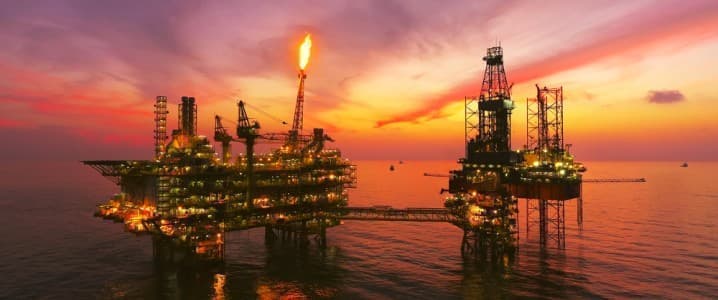BP’s latest energy outlook forecasts oil demand to peak in 2025, but the decline will be gradual, with consumption remaining high in 2035.
The energy transition is losing momentum due to slowing EV sales, insufficient renewable capacity expansion, and rising electricity costs.
The developing world’s growing energy needs are a major factor in the continued reliance on oil and gas, even as developed nations attempt to reduce consumption.
Oil and Gas
The energy transition is showing signs of losing momentum over the past few months. EV sales are slowing, wind and solar capacity additions are not expanding fast enough, and electricity is getting more instead of less expensive.
With those signs, others have been flashing red, too. Despite the push against oil and gas, these are here to stay for the long haul—and demand won’t even decline that much after peaking, according to the latest energy outlook of BP.
The supermajor, which used to compile the Statistical Review of World Energy, now does its own review. And according to its latest edition, oil demand will peak next year. And it’s not the first time it’s called the peak for oil demand.
The last time its statistical review said that demand growth had peaked—in 2019—it turned out to be very wrong. In reality, oil demand soared after the end of the pandemic lockdowns to reach new all-time highs.
Now, BP has noted that over the past five years, oil demand has been growing at an average of half a million barrels daily since 2019, but that is about to end, with demand on the decline over the next couple of decades. But here’s the thing. Before, BP forecast that this decline would be quite substantial. Now, it expects that in 2035, the world will still consume 97.8 million barrels of oil per day in 2035, which would be a relatively minor decline from the current rate of consumption, which is about 100 million barrels daily, which may rise above that this year if demand strengthens in the second half.
In other words, BP acknowledges that the human civilization’s dependence on hydrocarbons will not be so easy to shake simply by embracing alternative energy sources. What’s more, primary energy demand is still on an upward trajectory, and hydrocarbons will be the energy sources to respond to much of that—until we start needing less energy.
It is energy demand that is key to the success of the transition to energy sources that leave a lot to be desired in areas such as energy density and storage costs. To make them work, we need to consume less rather than more energy. Indeed, if governments and the business world suddenly find all the money and regulatory support that the transition needs, energy demand growth will peak by next year under BP’s Net Zero scenario.
Unlike that perfect-case scenario, the Current Trajectory scenario points to energy demand growth continuing until the middle of the next decade before peaking and then plateauing—because the developing world would continue to need more energy.
The BP outlook essentially outlines a deepening divide between the developed world, which is where the transition push began and where it has been the strongest, and the developing world, where access to energy is still a luxury in many places. Yet as developing economies grow, this luxury would become accessible to more people, and these people would be consuming ever more energy until they hit a peak.
The fact that the developing world is driving the increase in oil and gas demand while the developed world has seen a minor decline in its own demand for these—at the significant expense of deindustrialization—highlights a contradiction in one of the most popular transition arguments. It states that the transition will ensure abundant and affordable energy for everyone. However, the current state of the world is proof enough this is wishful thinking at best: the facts suggest that energy abundance lies with the energy sources the transition wants to do away with and replace.
That is how the developing world increases overall global oil demand while the developed world tries to consume less of it and mostly fails. And that is why BP has forecast continued dominance for oil—and gas—over the long term, with the decline mostly the result of improving energy efficiency, per its outlook. Interestingly, under its Current Trajectory scenario, strong oil demand remains despite a twofold increase in wind and solar deployments by 2050, to give those two, along with geothermal and biogas, a share of about 25% in total primary energy by that year.
This suggests that the current trajectory of energy policies, which has seen a veritable surge in wind and solar deployments, EV sales, and all sorts of other transition-related activities, is falling hopelessly behind the targets of the net-zero plan. It is something many transition advocates have been warning about, the IEA being among the most vocal ones. If the transition to net zero is to happen, the world needs to move faster, harder, and with even more urgency.
Yet this is not how things are moving on. There is that gap between the wealthy developed world, which is getting less wealthy as it directs ever-growing cash flows to the transition, and the poor developing world, which is getting wealthier because it is consuming more and more hydrocarbon energy and it likes it. That’s how oil and gas will continue to dominate the global energy landscape in the future. The developing world is a big place.

